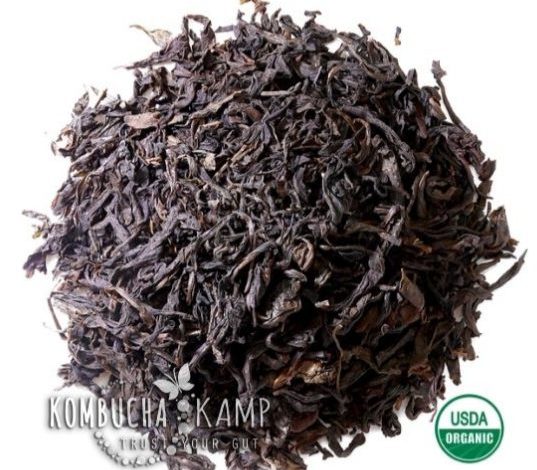Facts about Oolong organic tea you were not aware of

Oolong tea is also called “Wu long tea.” The other name for oolong is rock tea, a brown tea, or blue tea. The oolong tea organic is a Chinese tea that lies between green tea and black tea, and it is one of the most prized varieties. The high value of this tea is largely due to its health properties, particularly its antioxidants. The unique flavor, which can be instantly recognizable, is widely loved. The popular varieties of oolong teas are Formosa oolong, Wu-Yi tea, Ti Kuan Yin, and Pouchong. Each type of tea offers a distinct characteristic, full flavor, and health benefits. Here are the facts you may not know about oolong organic tea:
How is it made?
Contrary to other teas, oolong leaves have experienced a unique oxidation process. It gives them their bluish-black color and some of their most exceptional organoleptic qualities. The tea leaves are subjected to a process of aeration and sun exposure to achieve this oxidation. When compared to oxidizing black tea, oolong tea requires far less airing and drying time. Because only partial oxidation occurs, its distinctively potent scent, fruity flavor, mild and reddish infusion colors are preserved. So, the flavor of oolong blue tea is between green and black tea. It’s neither as fragrant nor as potent as the other. Although oolong tea is generally consumed as fresh as possible, briefly after processing, they are given a light roast before its consumption. This technique eliminates unwanted odors and makes the tea even smoother.
What makes the Oolong tea magical?
The oolong tea organic flavor is influenced by the processing methods used by the tea artisan. It has a variety of characteristics, including full-bodied to light, floral to grassy and sweet to toasty. It is challenging to generalize the oolong tea flavor profile. Oolong tea can have an oxidation level somewhere between green tea and black tea because it is only partially deoxidized. Its assortment of flavors is really diverse. Take the initial sip as you are enticed by the leathery texture and rich, deep mahogany colors. Even a tiny sip of oolong tea can stimulate powerful and joyful sensations in the mouth and mind. The notes of fruit, caramel, and toffee bring incredible satisfaction to the drinker.
Nutrients present in oolong tea
Like any other tea, oolong tea also contains numerous nutrients such as minerals, vitamins, and antioxidants. Below given is a detailed description of the nutrient content in the cup of brewed oolong tea:
- Caffeine: 36mg
- Manganese: 26% of the RDI
- Sodium: 1% of the RDI
- Fluoride: 5% to 24% of Recommended Dietary Intake (RDI)
- Potassium: 1% of the RDI
- Manganese: 1% of the RDI
- Niacin: 1% of the RDI
Oolong tea is rich in numerous good antioxidants, including the arubigins, tea polyphenols, theaflavins, and EGCG. These antioxidants will strengthen the human system and help to fight several chronic diseases. Besides the antioxidants, this beverage also contains theanine which is a body-relaxing amino acid.
Health benefits of oolong tea
- Reduces blood sugar and improves the functioning of the heart
Oolong tea has polyphenol, which is a helpful antioxidant in reducing the sugar levels in the blood. This antioxidant can increase insulin sensitivity in the body. Thus, people suffering from type 1 diabetes can take this every day to stay healthy and fit. High cholesterol levels and blood pressure can be dangerous to the heart. This loose leaf tea ball reduces blood pressure levels for people who are suffering from heart diseases. Additionally, oolong tea can also eliminate the risk of chronic heart problems. People taking this oolong tea are less likely to get heart strokes. Other than this, it can also relieve eczema and promote bone strength. Therefore, take oolong tea every day to strengthen your immune system.
- Aids weight loss and dental health
The energy-boosting properties of oolong tea may also help you in your weight loss goals because oolong tea is naturally calorie-free. By replacing the sugary soft drinks, you can save more calories and lose weight faster. Many studies have shown that oolong tea may help to increase fat oxidation and metabolism. In one study, it was proved that a person who drank oolong tea had fat oxidation levels that were 12% higher than the participants who drank only water. Because of the significant concentration of fluoride in the tea leaves, it has high oral health benefits too. It’s because fluoride is one of the main ingredients in dental toothpaste. One study has found that tea polyphenols help to prevent dental caries. The fluoride in tea leaves also helps to eliminate and fight infections that can cause cavities and tooth decays.
Bottom Line
It’s not a secret that drinking tea can be good for your health. Medical studies have reinforced many of the potential health benefits of oolong tea. Choose a high-quality loose leaf tea ball to reap the maximum benefits.
Read More – Desiremovies cc




